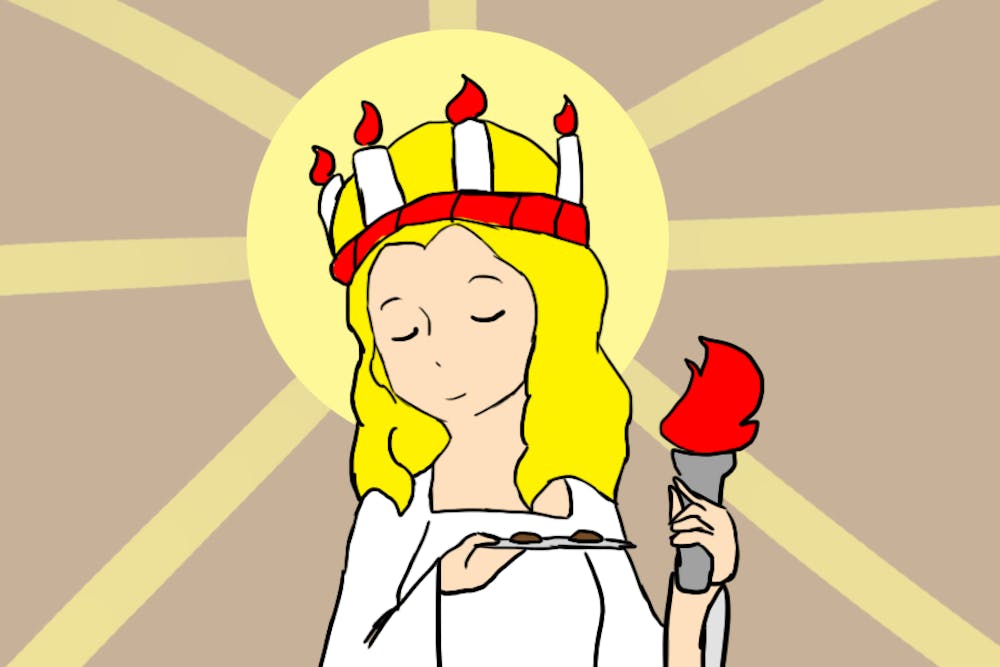St. Lucy's Day, a Christian holiday with a mysterious migratory past, is Dec. 13, and students of all faiths can take part in the rich history of this early European Christmastime celebration.
Lucia, or Lucy in English, was a young girl in the Roman Empire during the 3rd and 4th centuries who helped Christians hiding from persecution in a catacomb. She wore a wreathe of candles on her head so she could see while having her hands free to carry food.
The holiday originated to honor Lucy, who became one of the earliest Christian martyrs.
St. Lucy's Day is celebrated mainly in Sweden and Norway, but it is still recognized in some parts of Italy.
Hellen Di Puorto, an Italian instructor at ASU, said in Italy, where Lucy is known as Santa Lucia, the holiday is mainly connected with the Catholic Church. Santa Lucia is believed to be from Syracuse and the patron saint of Naples.
"She is the protector of the eyesight," Di Puorto said. "She is also called the blind goddess or the saint of good fortune."
Di Puorto said Italians also enjoyed various traditions that coincided with the holiday.
"In the north (of Italy), she was similar to Santa Claus, where she would bring toys to children," Di Puorto said. "But the children were not allowed to look at her or else she would throw ashes in their eyes."
A mystery surrounding the holiday is its movement from Italy all the way to the Scandinavian countries up in northern Europe.
Robert Bjork, the director of the Arizona Center for Medieval and Renaissance Studies, said there is not a clear idea on how Lucia made it to the north.
"It might have been brought by merchants, the vikings or priests trying to Christianize (Scandinavia)," Bjork, who has done research in Scandinavian studies, said.
Although nobody knows how this happened, it is not hard to understand why she has stayed so popular, he said.
"During the winter time, there is only about three hours of daylight each day, so Lucia's relation with light was pretty attractive," Bjork said.
St. Lucy's Day is what starts the Christmas festivities for December. Young girls will dress up as the saint and go around singing songs and giving out pastries to people in the neighborhood.
Many churches in Sweden and Norway will hold a procession led by a girl from the church chosen to wear Lucy's wreath of candles.
But despite the holiday's religious roots, it is now more secular.
Carina Norlund, president of the Swedish Women's Educational Association in Arizona, said, "Children will dress up as Santa Lucias, gingerbread people and Santa Clause helpers, so it is more kid friendly now."
The SWEA is having a Swedish Christmas market on Dec. 2.
"We will have Swedish bread and baked goods and, of course, the 'Lucia train,'" Norlund said. "And, you don't have to be Swedish to come."
During their darkest time of the year, Scandinavians use this holiday to bring light into their lives, Bjork said.
"What's extraordinary is that everything is so festive," Bjork said. "The darkness is almost impenetrable, but then you see these young girls with lights offering food to people. It's a wonderful thing to see."
Reach the reporter at ihaugen@asu.edu and follow @haugen_dazs on Twitter.
Like The State Press on Facebook and follow @statepress on Twitter.




